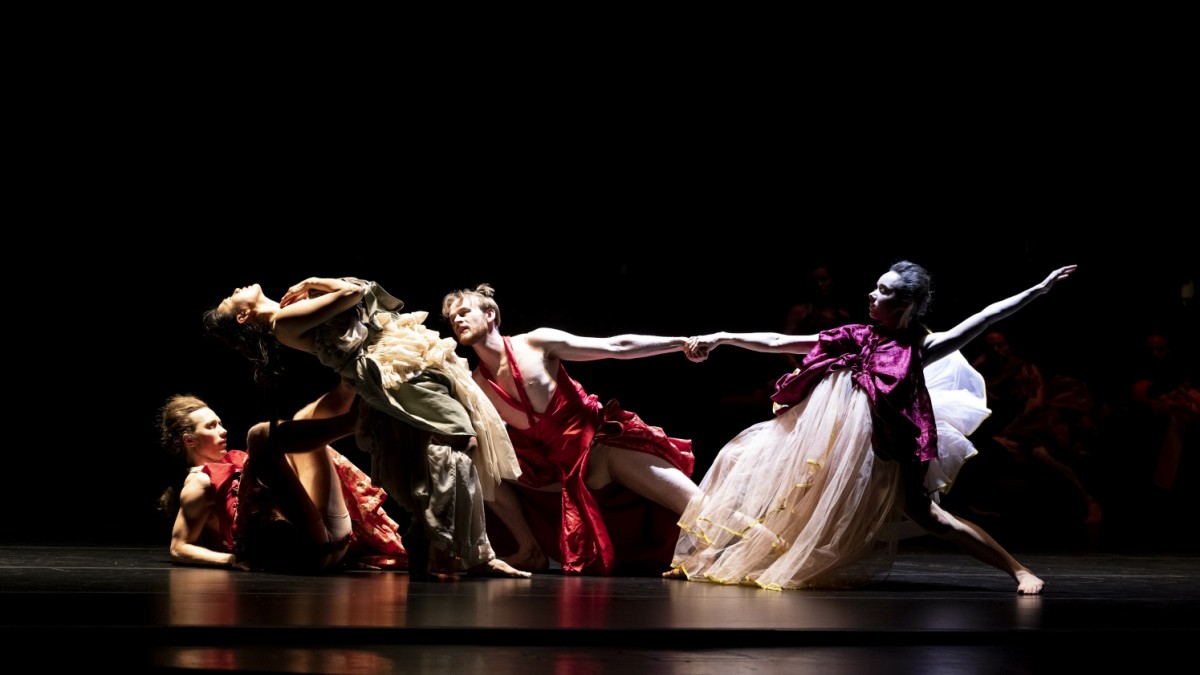Dancing is not for everyone. Richard Wagner, for example, considered it “the most realistic form of art”. But with the exception of Bacchanal in “Tannhäuser”, the action artists have nothing to do with his works. An exception remained the choreographer and director Ruth Berghaus, whose brilliant productions of “Parsifal” or “Tristan and Isolde” wrote the history of opera in the late 20th century.
Recently, it has been mainly choreographers from Israel who have rounded up the field of dance and Wagner’s universe – despite or perhaps because of the composer’s penned anti-Semitic propaganda. In 2012, Saar Magal undertook the first such project with “Hacking Wagner” at Haus der Kunst in Munich, and now the Wagner wave has reached the Salzburg Easter Festival: Emanuel Gatt, an Israeli resident in the south of France, and his fourteen-strong group. Sweet dreams at the Felsenreitschule. Titled the fifth and final of Wagner’s “Wesendonck-Lieder,” the hour-long piece transforms the already magical setting into an artistic cathedral.
Two velvet sofas glow in the semi-darkness of the widescreen platform. On one of them rests a figure, whose robe is as red as the tapestry of the furniture. Man and matter seem to merge in a completely earthly way, while the figure of an angel appears in the arcades of the back wall and begins to speak: “Nothing is made in history, everything is made of itself.” The White Seraphim steps down the aisle toward the staircase, where he is joined by dozens of other Heavenly Messengers. Standing as if on Jacob’s Ladder, they wander between the sublime realms of art and human existence: the life of instincts, in which they will soon be immersed.
Just as the outspoken narcissist Richard Wagner did over a century and a half ago. In exile on Lake Zurich, he honed his writing Art and Revolution and chatted under the watchful eyes of his wife Minna with Mathilde, wife of steward Otto Wisendonck, who offered the couple who had fled from Saxony free lodging and princely lodging.
In 1857/1858, Wagner sets poems written by the mistress of the house to the music of these five “Wesendonck-Lieder”, which the choreography of Emanuel Jatt interprets rather than illustrates. While the love couple stays apart—Milena Twiehaus recounts Wesendonck’s lyrical “Treibhaus,” Michael Loehr passages from the text Revolution—the dance resembles an associative stream, from the depths of moving sculptures, diagonally arranged bodily cornices or the expression of choral groups growing. In general, the expressive moment, the esoteric observation, forms the interior, so to speak, on which these “dreams” flourish like entwined plants of water.
The Israeli Emmanuel Gat is considered one of the best contemporary choreographers
Until, in the second part of the evening, the cast slip off their whites and return in their taffeta robes. From the start, “Wesendonck Songs” roll like waves, and a recording with Julia Varady from 1998 unearths the melodies in dramatic mountains. In the intervals between them, clothes rustle, as if long crinolines and trains are being collected.
The majority of the dancers immediately sat down on the sofa to watch the theatrical performances of the other two, three or four who were holding hands and embracing each other like flowers. Or challenge until the man conquers the woman and a storm of emotions takes over everyone and drives them away. Like a tornado, the music propels the dancers into a spiral and finally back to the staircase. There they stand, a dozen persons and a mirage of the royal couple: two heads, two bodies in the center of the room, similar to the dim light until the double being dies in the dark.
Emmanuel Gat is not only one of the best contemporary choreographers, but also an accomplished photographer. His gift for sensuality, for visualizations that go beyond the usual molds, is also concentrated in the choreographies that the fifty-two-year-old created for his own company. He sees himself more as a motivator and moderator, and ads are not his thing. Most recently he had “Lovetrain2020” and with it the 80’s sound Tears of fear A chase across Europe – what now impresses him about Wagner? The answer comes immediately: “Whatever else Wagner did – he was a pioneer as a composer. Revolutionary.”
Gats “Dreams” is also doing groundbreaking work. Because with them Nikolaus Pächler, director of the Salzburg Easter Festival, introduced dance to the program for the first time. Which turned out to be an excellent idea. It is recommended to continue.

“Explorer. Communicator. Music geek. Web buff. Social media nerd. Food fanatic.”





![“Pikmin Bloom” Find the differences in honor of Children's Day!! Trump's status report is so useless that you can't help but laugh[Playlog #621]|. Famitsu application[موقع معلومات ألعاب الهاتف الذكي]](https://app.famitsu.com/wp-content/uploads/2024/05/8b2c6bdec98dc30711a5e845d65a4eb9-506x254.jpg)

More Stories
Nicolas Cage's son is accused of beating his mother, Christina Fulton
Simulations predict when humans will become extinct
Fall Guy lands $28.5 million, Phantom Menace returns